






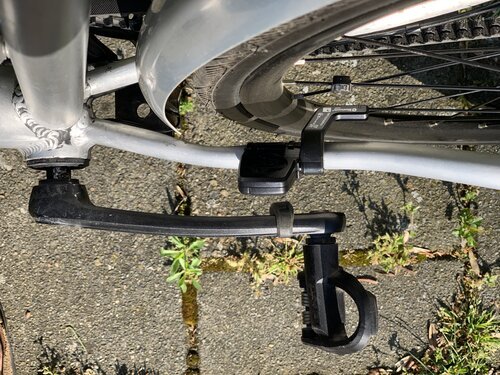











Last Sunday, I participated in the Venloop, a half marathon event in Venlo. I completed the 21KM run in 2h05, a result I am satisfied with as this was my first ever 'official' event since I began running just three months ago. In this post, I'll share my experiences with training, balancing fitness data, and feeling fit.

Since the start of this new year I am working out harder than the previous months. I have set some goals for myself and have taken on a training scheme incorporating running, cycling and swimming. As I sift through the growing mountain of workout data, I find myself questioning: does having more data truly translate to better fitness outcomes?

In preparation for this year’s Fietselfstedentocht (236KM), I took my bike and set out for an adventurous ride through half of the Netherlands. It was my first long distance ride after being infected with COVID. If you're considering a long-distance ride yourself, be sure to read along to discover invaluable tips and tricks from my experience.

How often do you look in the mirror? Probably more than a few times a week! I have been thinking about this ever since I received my newest WHOOP 4.0 biometric sensor. It's great. But, why do I wear it? What value does it provide? Why should you wear it?

Today I witnessed the birth of my daughter! You feel humble as a man, witnessing the labour and magic. Not sure if I can come up with something having more impact on a man than this. For the purposes of science and curiosity I wore a biometric sensor, and this is what it recorded.

Today I took my fixed gear bike for a ride, 176KM from Amsterdam to America (Limburg, The Netherlands). Rain and wind added to the challenge, creating an ultimate test for man and machine. Let some of my fun be of inspiration to you!

This week my trustworthy commuter bike started making strange squeaking noises when braking. It has been just over three years since I started cycling on it. People frequently ask me how the bike is performing and how the Gates Carbon CDX belt drive is doing? Time to have a look at the bike after 21.000KM!

For the past week I have been riding my bicycle with Omata One, a special bike computer. Its mechanical hands indicate speed, distance, ascent and time ridden measured using precise GPS data. It is fun, read along to know why.
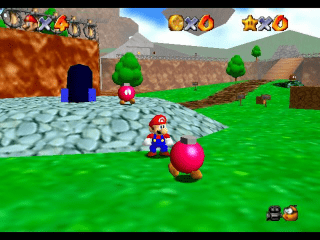
This month I did some research into how health is visualised in fitness apps and games. For a new app involving personal health I am looking for an intuitive way to visualise how healthy one person is. There are many colourful approaches out there!

This week I went to my doctor to have my blood examined, to determine my cholesterol levels. Over the past years I have been paying more and more attention to my health. After improving my lifestyle considerably, I wondered what my numbers were.
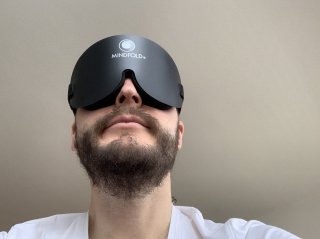
Over the past few weeks I have been experimenting with wearing a sleep mask in bed, blocking all light. Our bodies produce the sleep hormone, melatonin, in darkness. Living in an environment awash in artificial light, is therefore exactly the sort of thing that disrupts one's circadian rhythm. Can a simple mask help?

The past months I have been wearing the WHOOP Strap 3.0, a wearable sensor that collects health and fitness data. It's different compared to most other fitness bands as it was designed with professional athletes in mind. It is focussed on daily strain, recovery and sleep. Read along to find out how this works.
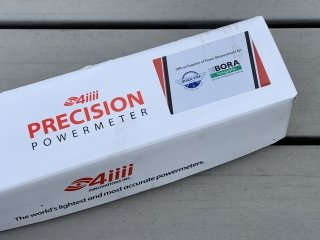
After I created a minimal road bike, I decided to install a power meter to find out what's it like to measure the power output of my legs. What can you learn from a power meter? Is it difficult to install? Is it worth it? Read along to find out.
Sleep monitoring is a popular feature of many smartwatches and wearables. Devices like Fitbit, Withings, Apple Watch and Biostrap analyse biometrics during your sleep. These wearables are worn on the wrist and use optical sensors to capture your heart rate. I wondered how the optical sensors would compare to a high resolution chest strap HR-monitor.

With modern wearables, smartwatches and fitness bands, it has become easy and common to measure your heart rate. There are however fundamental differences in sensor types. Some sensors capture the electrical signal from your heart while others use light to analyse the blood flowing through your vessels. If you're interested in measuring heart rate, it's good to understand these differences.

Tomorrow it's six months since our son was born, a good moment to reflect upon the experience of being a parent of a kid with MCADD. This metabolic condition demands special attention on the feeding schedule and preparation for situations when things go different. It's good to share that this has quickly become normal for us, here are some thoughts and tips.

This week I took my bike for a long distance (211KM) ride around the Dutch Markermeer, solo! Unlike participating in an organised event with service, support and company along the way, going solo requires a different preparation, mindset and planning. Read along for some practical tips for long distance cycling.

This month I have intensified my training to become fit for this year's Fietselfstedentocht, a 235KM bicycle ride through Friesland. Over the years I have tested different kinds of bike computer setups: from dedicated (and expensive) Garmin Edge bike computers to no data at all. Eventually I came up with a flexible setup to gather advanced ride data using my smartphone, let me explain how this works.

A year ago I tried to create the ultimate commuter bike, a modified Sensa Cintura with the Gates CDN/CDX carbon belt drive. I received lots of messages from cyclists and commuters from all over the world. From the Swiss alps, France, Italy, Germany, United States and even "down under", Australia! You all wanted to know: how does the upgraded bike hold up?

Just days after our son was born, we ran into trouble when our little man didn't want to eat anymore. Repeated attempts to feed him failed as he appeared to be too tired to drink from his mother. When we measured his body temperature we were shocked, only 33º Celsius! What followed was nothing less than an incredible emotional rollercoaster!

Last Christmas my wife gave birth to our son, a little boy that would change everything! It's an incredible experience to become a parent, especially if it is your first kid. It introduces a whole new way of living, having to deal with regular feeding, caring and sleepless nights. Read along for my (biometric) findings and some practical tips!

Just when the temperature was a low 2° Celsius, I jumped in the Amstel river! While it was nearly freezing outside I went for a swim, just moments after I've taken an ice bath! This post is about the incredible birthday present I got, a workshop involving the Wim Hof Method.

This month Apple launched a new Apple Watch series and released an update to watchOS. The focus of the smartwatch is more and more gearing towards health and fitness. This made me curious, how well does Apple Watch work for different activities?

Last weekend me and my brother went to Rock Werchter, a multi-day, music festival in Belgium. Over 140 thousand visitors enjoy world famous artists like Pearl Jam, Nick Cave, Artic Monkeys, Noel Gallagher, The Killers and the Queens of the Stone Age. This year I didn't drink alcohol during the festival, leading to some interesting observations...
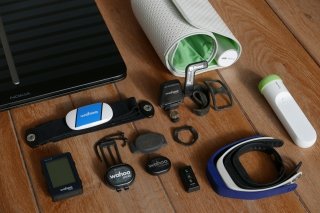
A good customer of mine was once a physiotherapist, he told me about people asking him to "feel their muscles" to tell them how they where doing. "Crazy!" he told me: "I can never feel better than the people themselves, if they only would listen to their body". This caused me to question the health and fitness sensors I use.

This month I made my debut as amateur actor. I am no Hollywood star, nor do I envy to become one. But I do like crazy experiments and operating outside of my comfort zone often leads to new and refreshing insights. I took part in an amateur drama play and - in the name of science and fun - strapped myself with sensors to measure what happened to my body.

This winter I use a Sensa Cintura bike with a Gates Carbon belt drive as my daily commuter. It's a bike designed to be nice to ride thanks to its sporty lightweight frame. It's also meant to be low on maintenance thanks to the belt drive and Nexus Afline 8 integrated gear hub. After 1800KM in just eight weeks, it was time for some upgrades.

For a few years now, I commute to work using a bicycle. I have lost more than 15KG since I stopped using my scooter. This week I tested a VanMoof Electrified S, an electric bike with an industrial, minimal design. Is it any good? How does it compare to a normal bike? Will an electric bike make you lazy? Read along to find out!

Most wearables (smartwatches, fitness trackers, etc.) use very basic sensors to capture heart rate. Their signal is binary: just counting beats. Biostrap is different, instead of just checking pulses, it captures a high-fidelity PPG waveform. These waveforms are the same kind that doctors use, making me wonder what I could learn from them!
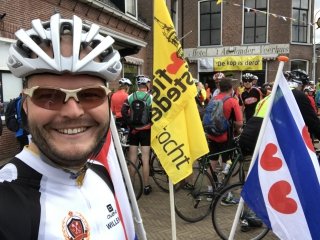
This month I cycled the Fietselfstedentocht, a 235KM tour through Friesland. This tour brings you through various Frisian cities throughout one of the most Northern provinces of the Netherlands. The tour was first organised in 1912 and has grown to become legendary due to its history, challenge and popularity; well worthy of a blog post!

Technology has come a long way since the first computer. Smartwatches today are very much an achievement of miniaturisation of technology. I recently used an Apple Watch Series 2 to find out if technology has come far enough to replace my mechanical watch, today I share you my findings.

One year ago I started recording all my bike rides, including commutes, short grocery trips and long Gran Fondos. I equipped my bicycles with Garmin Edge computers that recorded location (GPS), speed, cadence and my heart rate. I covered more than 7683 kilometers during 320 hours of riding. It's time to review all the data and share some photos I took along the ride!

Smartphones are everywhere in the modern society we live in today. Through our 4G and WiFi connections the internet is just one tap away. In fact, it is so close that it feels like a natural extension. But is this wealth of information all good or does it have a downside too? It seems like an interesting experiment to go app-less for a while and solely use a dumb phone.

















